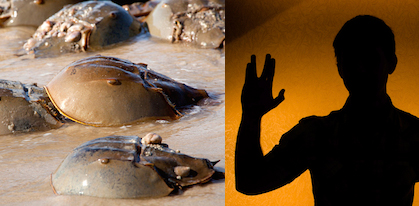Sometimes you have to look at the whole picture, big and small.

Sarah Cork, PhD
That was the lesson that emerged from Winship Cancer Institute researcher Erwin Van Meir’s laboratory, highlighted in a recent paper in Oncogene. Van Meir’s team has been studying vasculostatin, a secreted protein that inhibits blood vessel growth by tumors (hence the name). Vasculostatin was discovered by Balveen Kaur, now at Ohio State, while she was in Van Meir’s lab.
Van Meir and his colleagues originally began studying vasculostatin because it is a product of a gene that brain tumors somehow silence or get rid of, and studying the obstacles our bodies throws in cancer’s way may be a good way to learn how to fight it via modern medicine. Eventually, it could form the basis for a treatment to prevent a tumor from attracting new blood vessels.
Vasculostatin is somewhat unique because it is a secreted fragment of a membrane-bound protein, called BAI1. BAI1 has an apparently separate function as an “engulfment receptor,” allowing the recognition and internalization of dying cells.

Most of the secreted vasculostatin is around 40 kilodaltons in size, not 120 as previously thought.
Graduate student Sarah Cork discovered that most of the vasculostatin protein being produced by cells is actually much smaller than what had been originally discovered. She and Van Meir were surprised to find that the smaller, cleaved form of the protein still has potent anti-angiogenic activity.
The researchers were using a technique where a mixture of proteins is separated within a gel by electric current, transferred to a polymer sheet, and probed with antibodies. The large proteins appear at the top and the small proteins at the bottom.
“Previously, we had been running the gels for a long time to detect large protein fragments, so missed out on what was happening with small fragments which run off the gel,” Van Meir says. “We were only looking at the top of the
gel, when the smaller form of vasculostatin was actually much more
abundant as you can see on the picture of a gel run for a shorter time.”
More broadly, Van Meir says that the finding adds to understanding about BAI1’s dual function in the brain and how vasculostatin (big or small) might be used in anticancer therapy.










